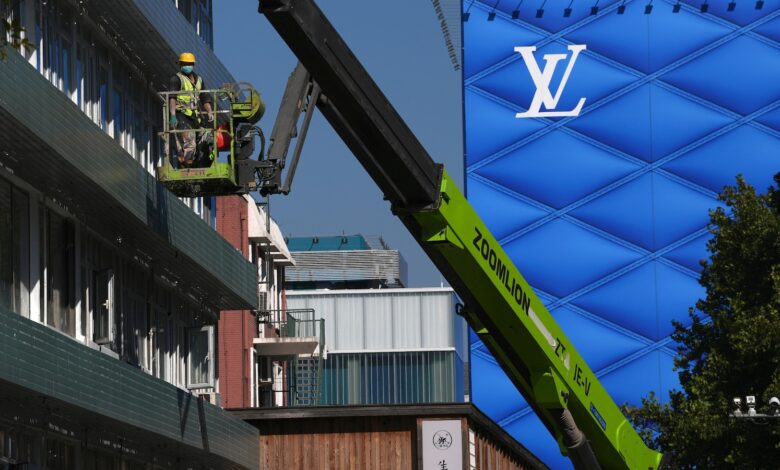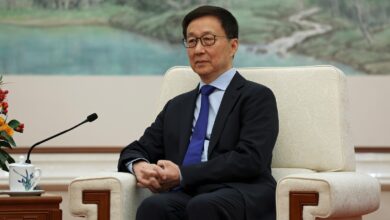China’s economy grows at a 4.6% rate in the last quarter, falls short of the official 5% target

HONG KONG — China’s economy expanded at an annual rate of 4.6% in the July-September quarter, the government said Friday, in the latest evidence that recent efforts to rev up growth have yet to take hold.
The world’s second largest economy slowed from 4.7% annual growth in the previous quarter and falling short of the official target of “about 5%” growth for 2024, a figure that some analysts consider ambitious without more aggressive measures to spur consumer demand and spur a recovery in the ailing property sector.
In a statement, the National Bureau of Statistics said that the economy was “generally stable with steady progress” even in the face of a “complicated and severe external environment” and complicated domestic economic development.
The economy has remained sluggish despite the lifting of COVID-19 restrictions at the end of 2022. Consumer confidence is low and the real estate market remains a drag on the economy.
Chinese policymakers have in recent weeks announced a wave of measures aimed at boosting the economy, including reducing mortgage rates for existing homes and allowing banks to lend more by reducing reserve requirements.
But Beijing has so far stopped short of unveiling major new stimulus plans that analysts and stock investors believe is needed to give the economy a major boost.
China’s growth rate in the first three quarters of the year was 4.8%. On a quarterly basis, the economy expanded 0.9% in the quarter that ended in September, up from 0.7% growth in the previous quarter.
For the first three quarters, China’s factory output rose 5.8%, while retail sales expanded 3.3% compared to the same period last year. However, property investment sank 10.1% and the value of new home sales plunged 22.7%, underscoring weakness in the housing sector.
Earlier this week, China reported its September exports slowed sharply, rising just 2.4% in dollar terms from a year earlier, down from 8.7% year-on-year growth in August. Imports were also weak, growing just 0.3% and missing estimates.
“A boost from fiscal stimulus should help narrowly meet the annual growth target this year and support activity in the coming quarters, although this won’t stop growth from slowing again by the end of next year,” Zichun Huang of Capital Economics said in a report.
Huang said that while retail sales and industrial output have improved, the housing market remains in the doldrums, with sales volumes still edging down and home prices continuing to drop.
Real estate measures announced on Thursday, such as increasing financing for approved housing projects, are “unlikely to drive a significant turnaround in the sector and broader economic activity,” she said.
Most of the moves by the government to revive the economy have been piecemeal.
On Friday, China’s large state-run banks cut their deposit rates, to 0.1% from 0.15% for demand deposits and to 1.1% from 1.35% for longer term deposits.
Meanwhile, the central bank issued guidelines for state banks to provide loans to companies and major shareholders for stock repurchases as part of an effort to stabilize China’s share markets, which have languished in recent years.
The loans, which can be made only by 21 designated financial institutions, will have a maximum interest rate of 2.25%, the People’s Bank of China said in a statement that underscored plans for strict oversight of the effort to support the markets.
The news helped drive a rally in Shanghai, with the Composite index up 2.1% and the benchmark for the smaller market in the southern city of Shenzhen up 2.4%. Shanghai’s benchmark has gained 9% in the past three months, though it had surged higher last month with the release of new measures to counter the slowdown, before falling back as investors registered their disappointment over a lack of big government spending initiatives.
Hong Kong’s Hang Seng index gained 1.9%.






